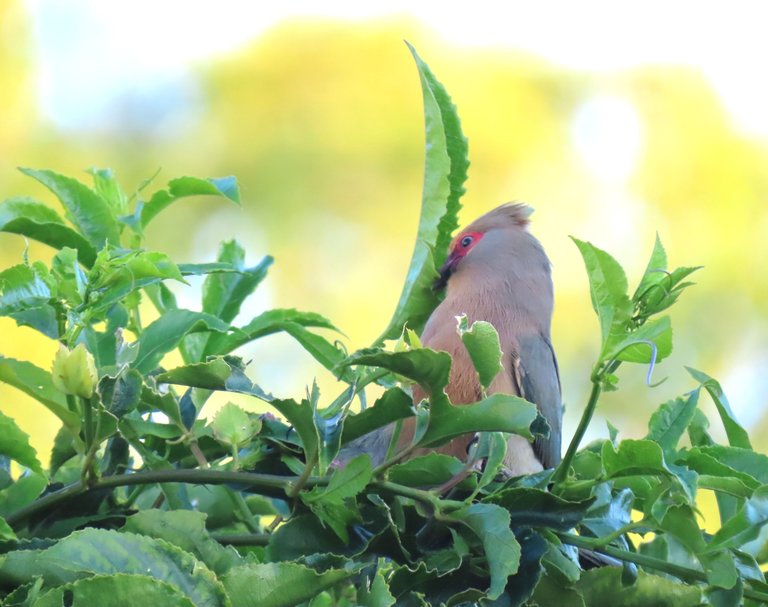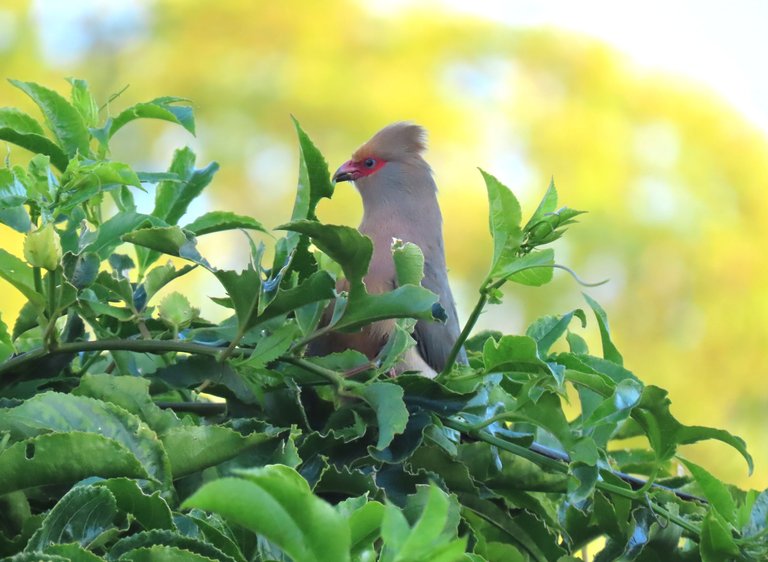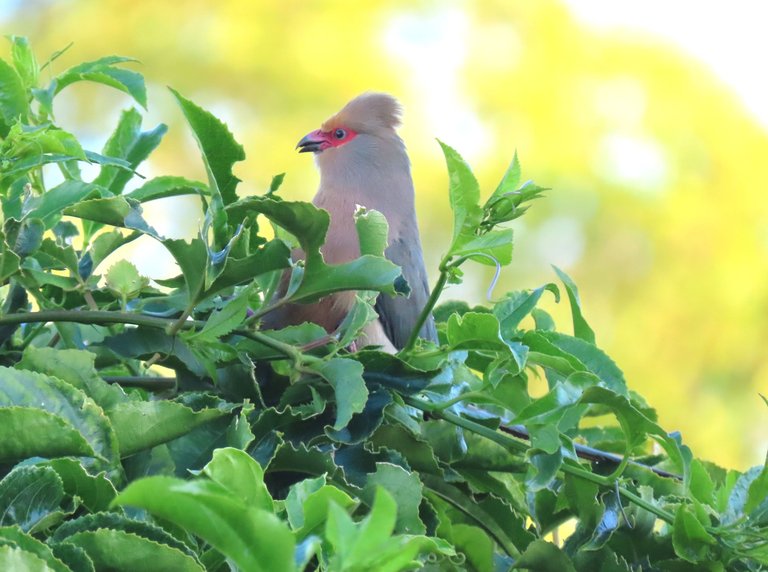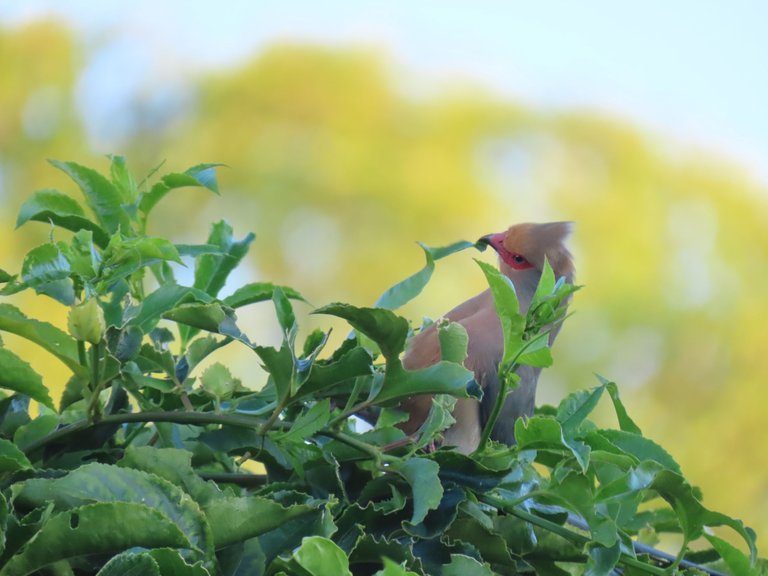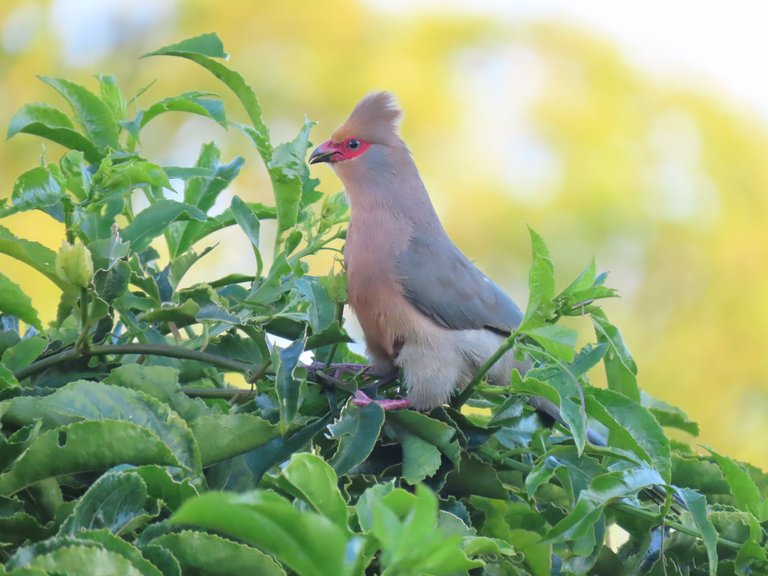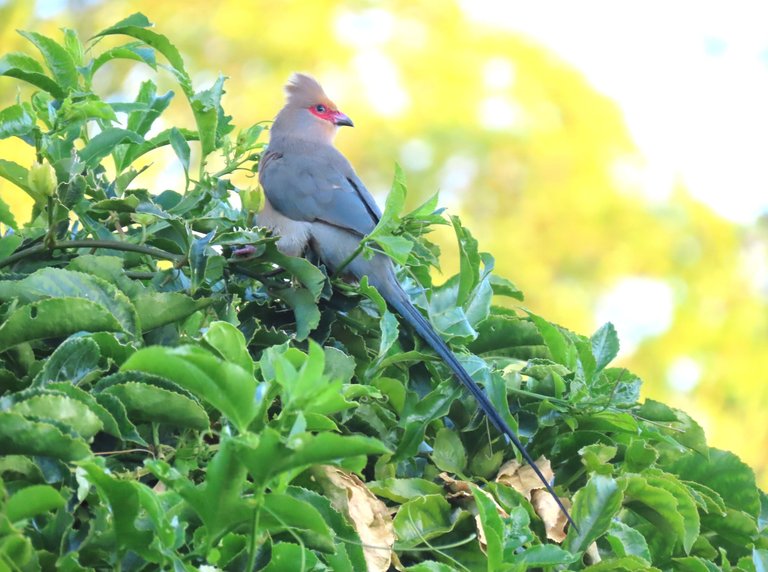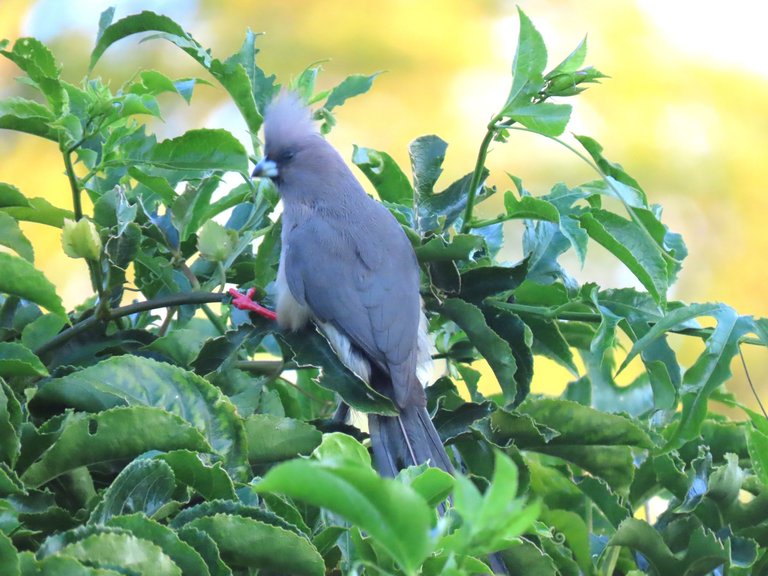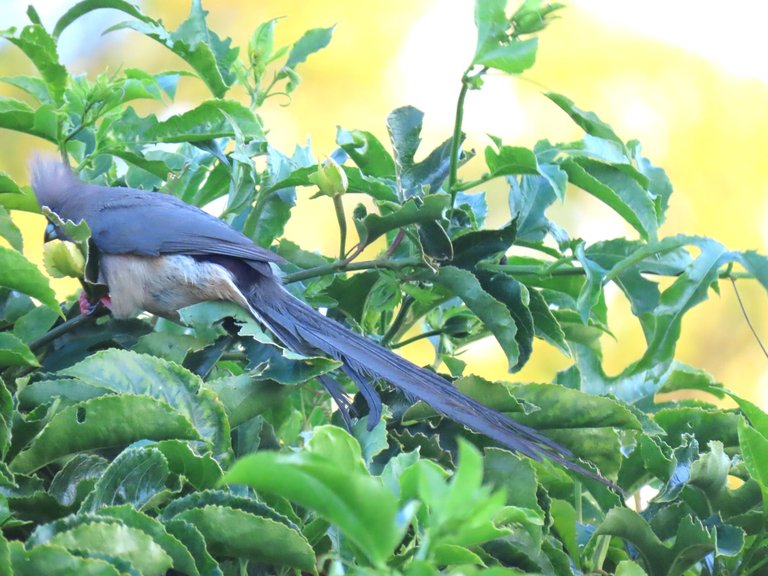Say mate, she said, don't you know that this is our territory, as we have been here even before this house was built.
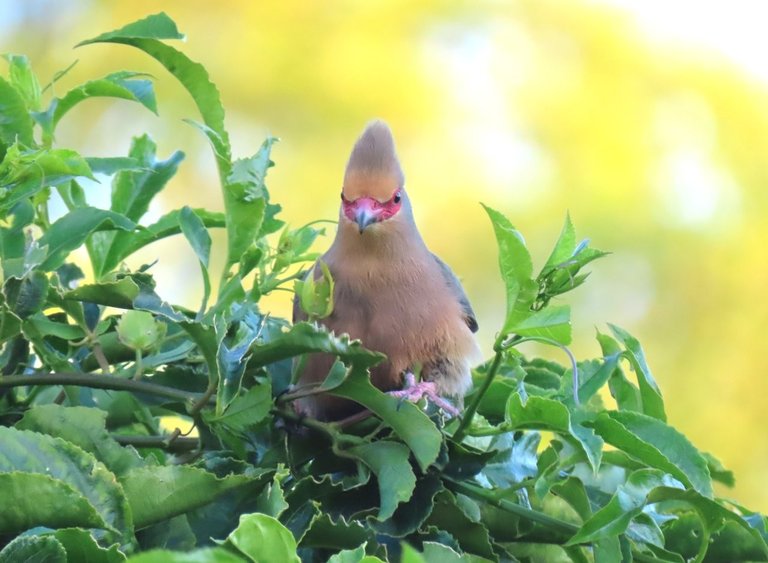
This after she had demolished that long leaf at the left next to her.
I have two Mousebird species in here to show you, and I will keep things lighthearted. Now mousebirds don't like humans close to them, and normally they will scatter when anyone gets near to them. But I know this, and I rather kept a short distance from her. She did, however, flip her head up every now and then to have a look at me. We now know that they like to eat the granadilla leaves, as we have seen them doing this in the three summer seasons that we live in this house. So, I have learned how to handle it politically.
Haughtily, she turned her back on me, and you can see her starting here on that leaf. She is a Red-faced Mousebird (Urocolius indicus).
See? She gave me a look every now and then.
Did you know that mousebirds are living fossils?
The mousebirds could be considered "living fossils" as the six species extant today are merely the survivors of a lineage that was massively more diverse in the early Paleogene and Miocene. There are comparatively abundant fossils of Coliiformes, but it has not been easy to assemble a robust phylogeny. The family is documented to exist from the Early Paleocene onwards; by at least the Late Eocene, two families are known to have existed, the extant Coliidae and the longer-billed prehistorically extinct Sandcoleidae.
Ah! She was having a real feast.
Then she straightened up and some movement behind me in the air caught her attention.
She looked around worried and flipped around, as she knew that something was about to happen.
Oh yes, this guy arrived, and he chased her away.
I always thought that this guy was the male of the Red-faced Mousebirds, but not so as he is a different specie, a White-backed Mousebird (Colius colius).
The White-backed Mousebird lives on the west coast of South Africa, and up to Namibia. Interestingly that the map shows us that the Red-faced Mousebirds live across the country, and so it was rare for the White-backed to be seen so far south to the Cape. There was a stage that I thought I would never get the White-backed Mousebird as up north we used to get the Speckled Mousebird, which is not common in the Cape. So, you can imagine my surprise when I saw the White-back Mousebird for the first time, right here at our house. I think that it is all of the new developments and habitat destruction that forces the birds to look for habitat in other areas. Thankfully, most of them come here.
Such is life.
I hope you enjoyed the pictures and the story.
Photos by Zac Smith. All-Rights-Reserved.
Camera: Canon PowershotSX70 Bridge camera.
Thank you kindly for supporting this post.
